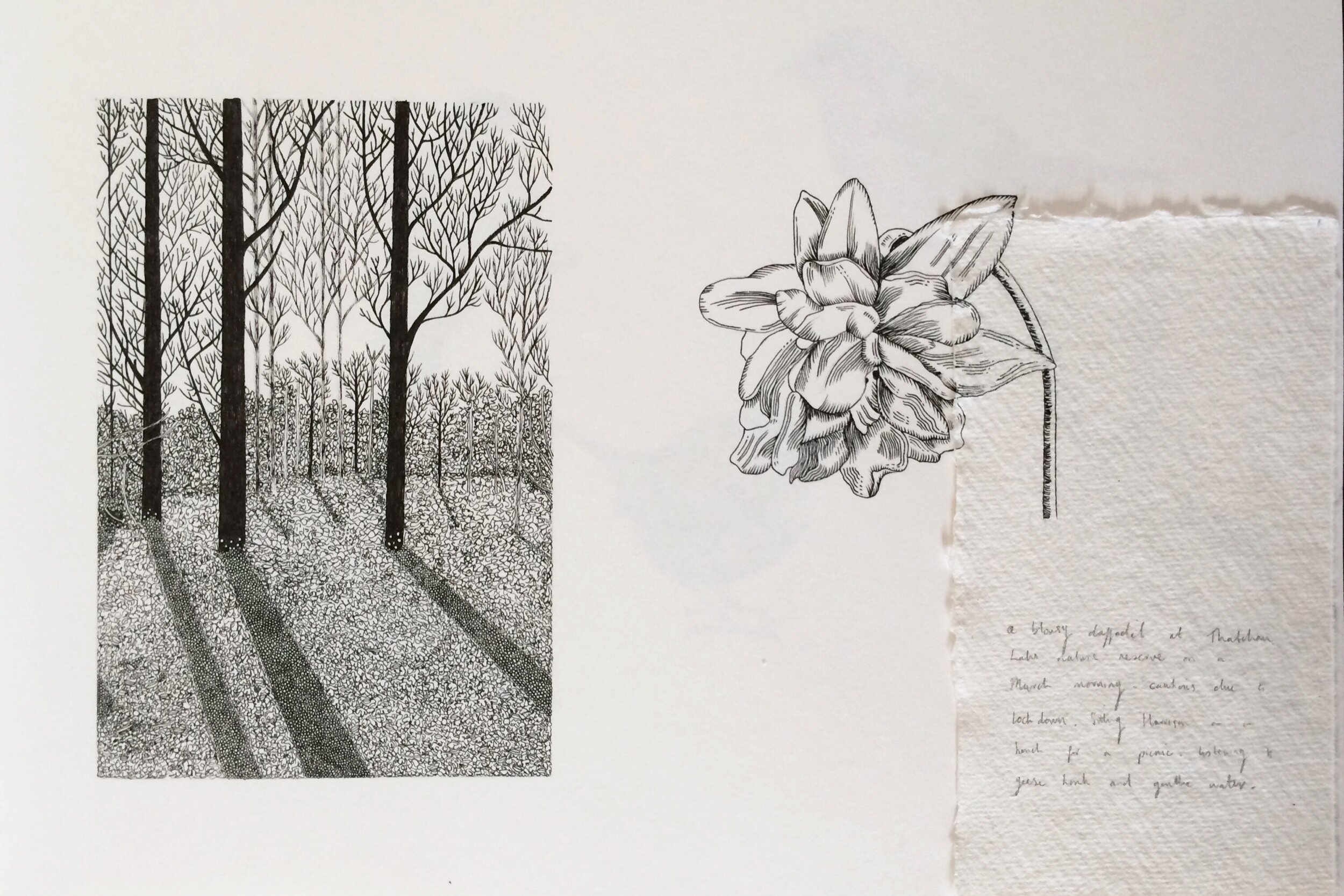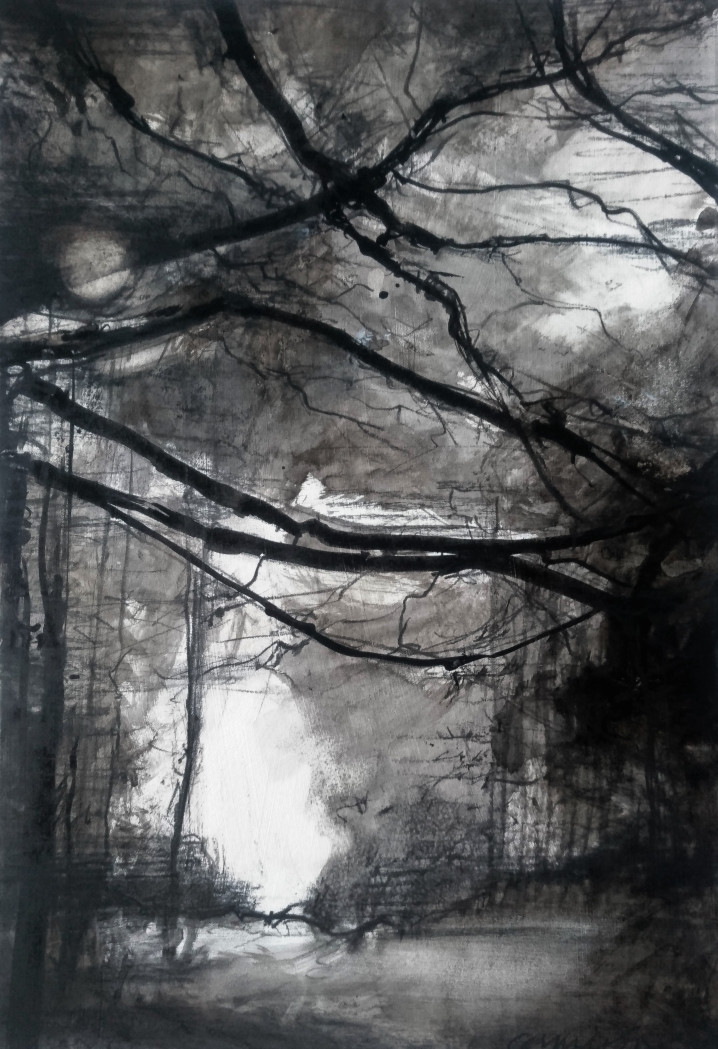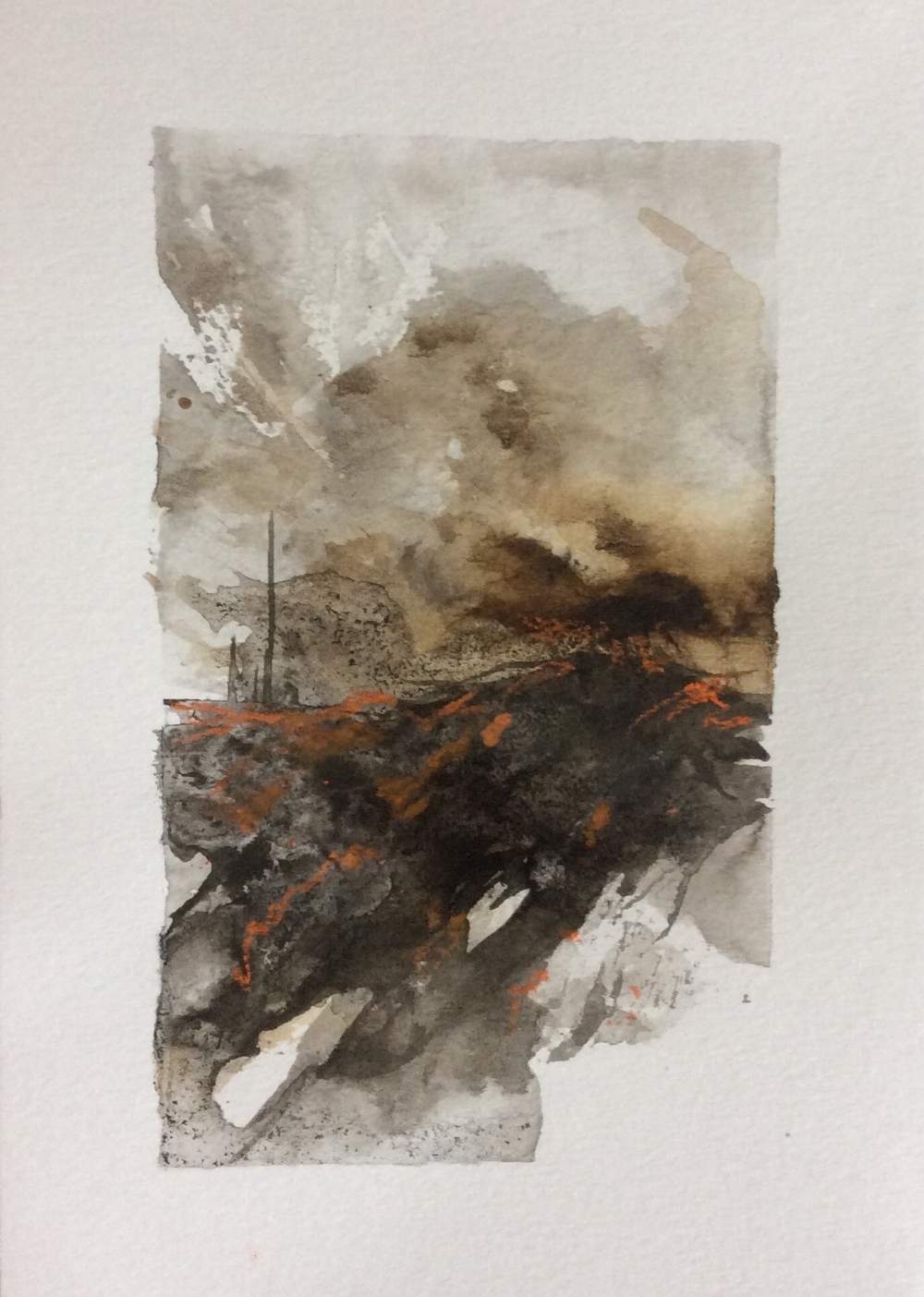Whilst perusing Instagram I saw that Shilpa Agashe, somebody who I have been following for quite some time was using a sketchbook, the way she was working in it really attracted my attention. There were painterly elements, text and collage. I really liked the aesthetics of it and it inspired me to have a go at using a sketchbook myself. I’ve never been much of a sketchbook user, I start them with good intentions but never seem to make it past the first few pages. I feel a bit like a bad artist for not using one, surely all good artists keep sketchbooks that could be works of art in themselves?! I only really kept them at university because they were a required element. I love seeing other peoples sketchbooks and find them to be a great insight into how an artist works. I tend to just draw on separate bits of paper, but I end up being very precious with it, hoping that whatever I make will be good enough to put in my shop and sell. There isn’t much room for experimentation with that kind of thinking.
So, with the U.K. in the middle of lockdown due to coronavirus I decided to start a sketchbook. I dug out an old book which I bought from L. Cornelissen & Son in London many years ago, I’d already ripped several of the first pages out so it was practically new. A fresh start. The only rule with my sketchbook was that there are no rules whatsoever. If I want to draw little landscapes, birds and flowers in my usual mediums then that’s fine, if I want to dip the whole thing in paint then that’s fine too. The point is to create, to gather ideas, to record what’s going on in my head and the outside world. To help inspire new work, to perfect techniques, to try something new, to work with colour and to continue with black and white. It’s all valid.
I’ve began making drawings in my sketchbook. A little pencil sketch from one of my last walks before lockdown, a sweet drawing of blossom made in fountain pen. A bright green tree with flecks of blue which I’m desperate to paste over with something else. Some birds chosen at random from my RSPB pocket guide, a detailed landscape of silhouetted trees in fine liner pen and a blousy daffodil with handmade paper collaged over the top. The sketchbook has already inspired ideas for future work, I’m excited to get stuck in to it when my son goes to sleep, it has ignited a need to draw again which I had been missing for a while.
Do you keep a sketchbook? If so then does it help you with your work?
If you enjoyed reading then please click the heart at the bottom, share or better still leave me a comment, I love reading them. ❤️

















